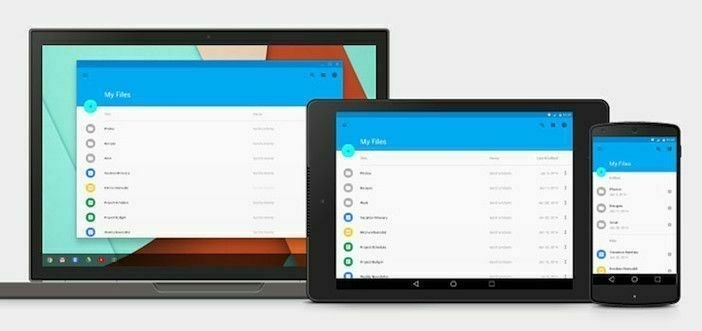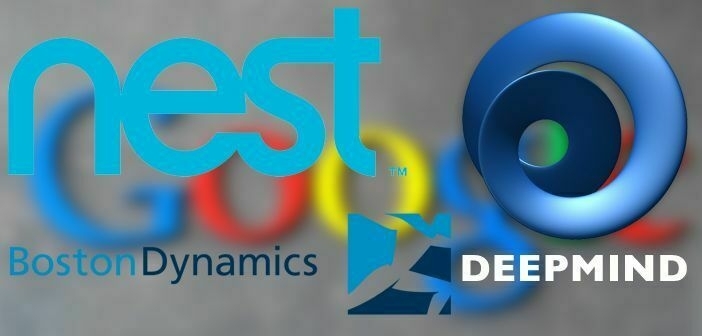In the 16 years Google has been active the world, along with its business model, has dramatically changed. The small start up aimed to streamline internet users experience, is now one of the worlds largest corporations. At its heart it still wants to be a start up. Google is still a search company, but its reach has grown so far there is barely an industry without its involvement.
But where can Google possibly go to now. With advertising revenues projected to decline as users become more aware of them. The vast majority of Google’s income may dry up. It must grow and evolve to maintain its dominance. Or suffer the same fate that have happened to huge companies before. So OK Google, where to next?
Search And Adverts
It was the idea that started it all. Sure search existed before but other systems used simple ranking by how many times the search term appeared on the page. Ranking pages by a simple count. Larry Page and Sergey Brin, whilst studying at Stanford, researched a better system taking in account the relationships between websites. And PageRank was born, making decisions on the page relevance and importance of pages.

Google is still very much rooted in search, most of its services make Google search and services prevalent. Gmail for example, is one big contextual search of your inbox. Leading to the appeal of a service that is faster and easier to use than competing services. No user of Android can avoid the search bar on the launcher, and Google search capabilities are the root of the new Android Wear and Android TV.
It’s maintained its core business, now leading the competitors by more than triple the number of search users. This means only one thing for Google, Adverts. Ad revenue accounts for the vast majority of Google’s income. Still managing to increase ad clicks and cost per click year on year. With Google search able to display ads to you that are relevant to not just your search. But you as an individual. Make a search for a product and you mite be chased around the internet by an ad for it for weeks.
We show that brand-keyword ads have no measurable short-term benefits. For non-brand keywords we find that new and infrequent users are positively influenced by ads. But that more frequent users whose purchasing behaviour is not influenced by ads account for most of the advertising expenses. Resulting in average returns that are negative.Consumer Heterogeneity and Paid Search Effectiveness: A Large Scale Field Experiment

But research by eBay may just be able to quantify the falling advert success. The opinion that users don’t click on search and Adsense adverts any longer seems to be true. Advertisement techniques grow and change over time. From radio and TV adverts, to online banners ads to now targeted adverts. Users eventually become ‘immune’ to the effects. Where will Google be without ads?
Lets not forget it doesn’t just make money from its own ads. It makes them from ads all over the internet and mobile. Ever accidentally clicked an advert whilst playing Angry birds or similar. Thats making money not just for the developer, but for Google too. After taking 30% off the cost of paid apps, it also takes a slice of anything made from placed ads or in app purchases later on too.
Android
The operating system that almost didn’t see the light day day is now more than 80% of the total market. As of March 2013 there were 1 billion Android devices in use. And another 1.5 million devices activated every single day. Each device primed to sell not only applications, music and films. But also Google services such as Gmail, Google plus and Google search. Storing masses of user data including location, usage and interests. All ripe for serving directed mobile advertising.

Android OS cost millions to develop and bring to life. And further millions each year to keep constantly updating and pushing the OS to keep pace with competition. Google then gives this all away for free through open source. Now this isn’t a debate on how open Android really is, but the fact is millions each year developing is given away for free. All in the hope of making it back through other avenues.
The use of Android also ties users into using other Google services. It provides them with a Gmail address and a Google plus account. Not to mention services such as Google Drive and Calendar. All in the hope of gaining data to display ads. This must be working for Google as its pushing for the next billion from emerging markets with Android One. As well as exploring where else it can put adverts. Creating unique hardware to gain more and more users for Android.
Google Content Everywhere
The best way from Google to do this is to put Android on every screen you own. Launching Android Wear, Android TV and even Android Auto at Google I/O 2014. Google will be on more screens and own more services than ever before.
There is no adverts placed on Android Wear at the moment, although that may change in the future. Its aim is to gain more user data and lock users into Android further. Where as Android TV is aimed to gain a reliable and consistent income from media. Providing Google Movies and TV along with Google Music.
In a similar move to its Play Music All Access service. It is only a matter of time before Google goes after subscription services such as Netflix. However even competitors such as Spotify have struggled to make profit at all. It now has over 10 million subscribers. Yet still falls in the red.

So moves into content and media may just be to pull an Apple. Tie users into as much content as possible so its harder to switch platforms. Gathering as much data as possible in the mean time. Google is very willing to develop technology to serve its ends. That being displaying adverts. Spending billions in research to provide something new. Putting ads on your thermostat, watch and even right to your eye with Google Glass. Is all a possibility given opportunity.
Google Likes Its Labs
Also not shy of spending some of its cash reserves. Google has been purchasing companies in varying fields for some time. It acquired Nest Labs for $3.2 billion to strengthen its push into bringing Android into home automation. Initially keeping all data separate it will go live in october with rolling all the data into Google Now. Should the owner give permission for this. Its yet to be seen if this data will be used to display ads to users.
However this and the resulting purchase of Dropcam for $555million adds other revenue streams to Google. Making the thermostat and smoke alarms available in Google Play store. Dropcam’s monthly and yearly subscriptions mean a different revenue stream than just adverts. Enabling the push for current users to move to Android from other platforms.

Amongst the acquisitions Google made a huge move for a confusing area in artificial intelligence and automatons. At the end of 2013 it had purchased 8 companies that either made or had direct links with robots. The jewel being huge military backed robot maker Boston Dynamics, alone having a $10.8 million contract with the US Defence Advanced Research Projects Agency (DARPA).
Several wild and wonderful market moves have been suggested for Google’s move into robotics. From walking talking adverts to the next level in automated personal assistants. But the move remains a head scratcher. Andy Rubin’s fascination in robots can’t be the only motivator to spend millions upon millions of dollars.
Despite Google protests it would be impossible to move into this field without government defence contracts. At least in the short term. As none of the Boston Dynamics products are aimed anywhere near retail applications. Although aiming towards manufacturing and processing will allow revenue beyond specific military areas.
XLabs And Moon Shots
The pinnacle of Google’s outlandish spending is Google legendary XLabs. The top secret area where engineers develop cutting edge technology. Also receiving funding for huge gambles and so called ‘Moon shots’. These advances are to see what engineers really can achieve given the chance. It is impossible to know how many projects fail. But several projects have appeared from the X Labs and do generate an income to Google.

Such as Google’s self driving cars, the technology is set to be put into cars in the next 12-18 months. Project Loon to bring internet access to less developed areas. This has received funding from carriers and is set to go into more extensive testing. Also Google Glass, the social dividing face computer that Google claim is the future. This may not pay back the millions put into development, but it clearly is an area Google is willing to fund. If only to gain information to use in Google Now development.
This Isn’t The End
Google is clearly moving into other areas of income to prop up a predicted decline in advertising revenue. However it clear this is not happening just yet. Around 95% of Google’s revenue is still linked to advertising. There are many areas that Google could choose to put its ads on. Much like the apps in the app store. The vast majority of service are free, providing you can put up with a few ads.
With even a few inservice purchases thrown in for good measure. If the adverts are apparently not working, and not intrusive. Users are obviously willing to put up with them in exchange for great services. Would users pay for a version of service without the ads? Or is Google set to become a freemium service?